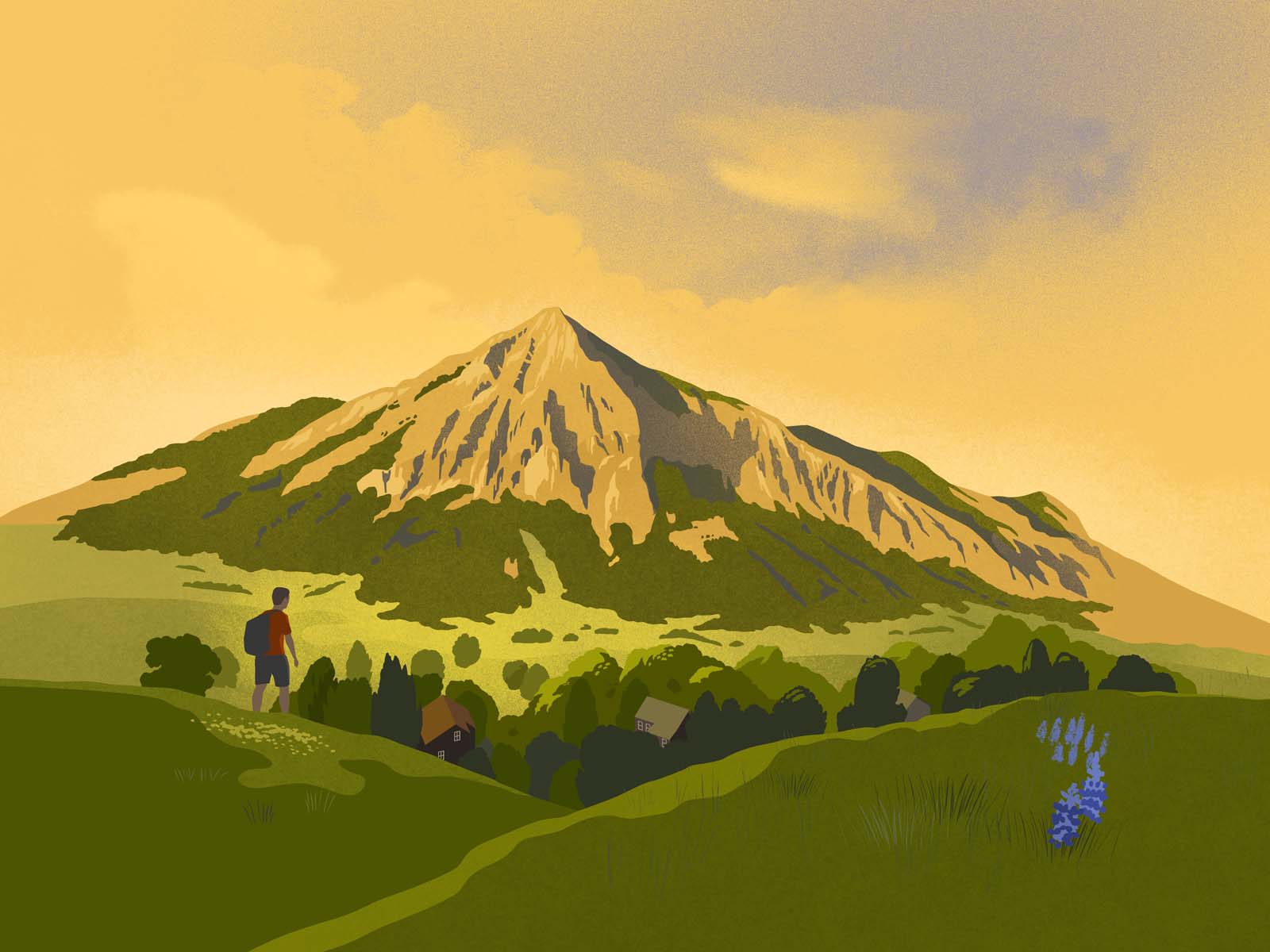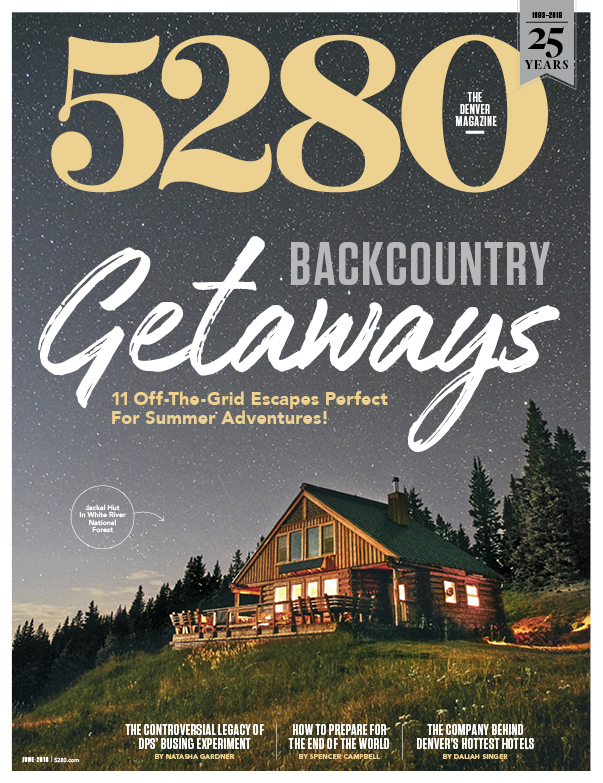The Local newsletter is your free, daily guide to life in Colorado. For locals, by locals.
The view from my 400-square-foot Crested Butte apartment is nothing special—but only by Crested Butte standards. When I step outside, I am face-to-face with the striking Elk Mountains. Standing on my deck, I can see Whetstone Mountain holding up the sky’s blue emptiness and Gothic Mountain washed in a peachy glow. Every day I spin myself dizzy counting the peaks and notches, tracing the horizon with my eyes.
I also trace that horizon—that wild line where earth meets open air—with my feet. Or, at least, I try. For two years, I’ve been on an exhausting, enlivening, unpredictable quest to ramble every ridge visible from the village. The White Rock massif? Check. The band of woods bending southwest from Red Lady? Done it. Season after season, I find myself drawn upward: no map, no plan beyond the topography itself.
This obsession with “horizon walking” began innocently enough. Following graduation from Colorado College and a decade roaming the West, I returned to Colorado in 2016 and settled in Crested Butte that fall. September is a famously cool, clear month, so I welcomed myself back with a stroll among golden aspens. That walk became a sweaty bushwhack through spruce thickets, then a huff-and-puff ascent of talus aprons, crumbly ledges, and finally, a random summit block. I say “random” because even today I don’t know where I popped out; at the time, I wasn’t aware of how the terrain jigsawed together.
Perched aloft in wind and bright light, bear-thick valleys and hawk-cut clouds reaching toward all compass points, my awareness was immediate, visceral—and it gave rise to inspiration. I’m new to this place, I thought, but I will learn its complex structure with my feet. A week later I was tiptoeing the knife edge between Augusta and Purple mountains, squalls threatening, my face cracked into a grin. So it began.
And so it continues—for the simple reason that my quest is patently impossible. Shift an inch on the sidewalk and the horizon shifts, too, revealing new secrets: cols and groves and snowfields and swaybacked spines. Cross the street and entire worlds of unnoticed geology appear. The landscape is finite but somehow infinite. Therein lies the beautiful challenge as well as the challenging beauty.
Wandering the high country, I often think of the sculptor Henry Moore’s belief that the key to a fulfilling life is having a project you can’t complete but which keeps you eager to try again. The impossible quest, such an artist might say, is the only one worth attempting.
As my excursions layer in memories—squeaky pikas, chartreuse lichens, sketchy traverses of serrated granite—I realize that my attempt to “learn” the Elks has been merely the means to a more satisfying sensibility. The real goal is experiencing your environment as a continuous mystery that pulls you into its micro-details, inviting you to keep exploring.
I revel in the process, the untickable tick list of this rugged skyline. Last weekend it was Anthracite to Baldy via an old mining road and an obscenely steep pitch of scree. Next weekend maybe it will be Teocalli north toward Coffeepot Pass. I suspect my boots will make the choice for me when Saturday arrives. Meantime, I’m going to linger on my deck, my gaze turned to the ring of mountains that goes and goes and goes—and continues to take me with it.









